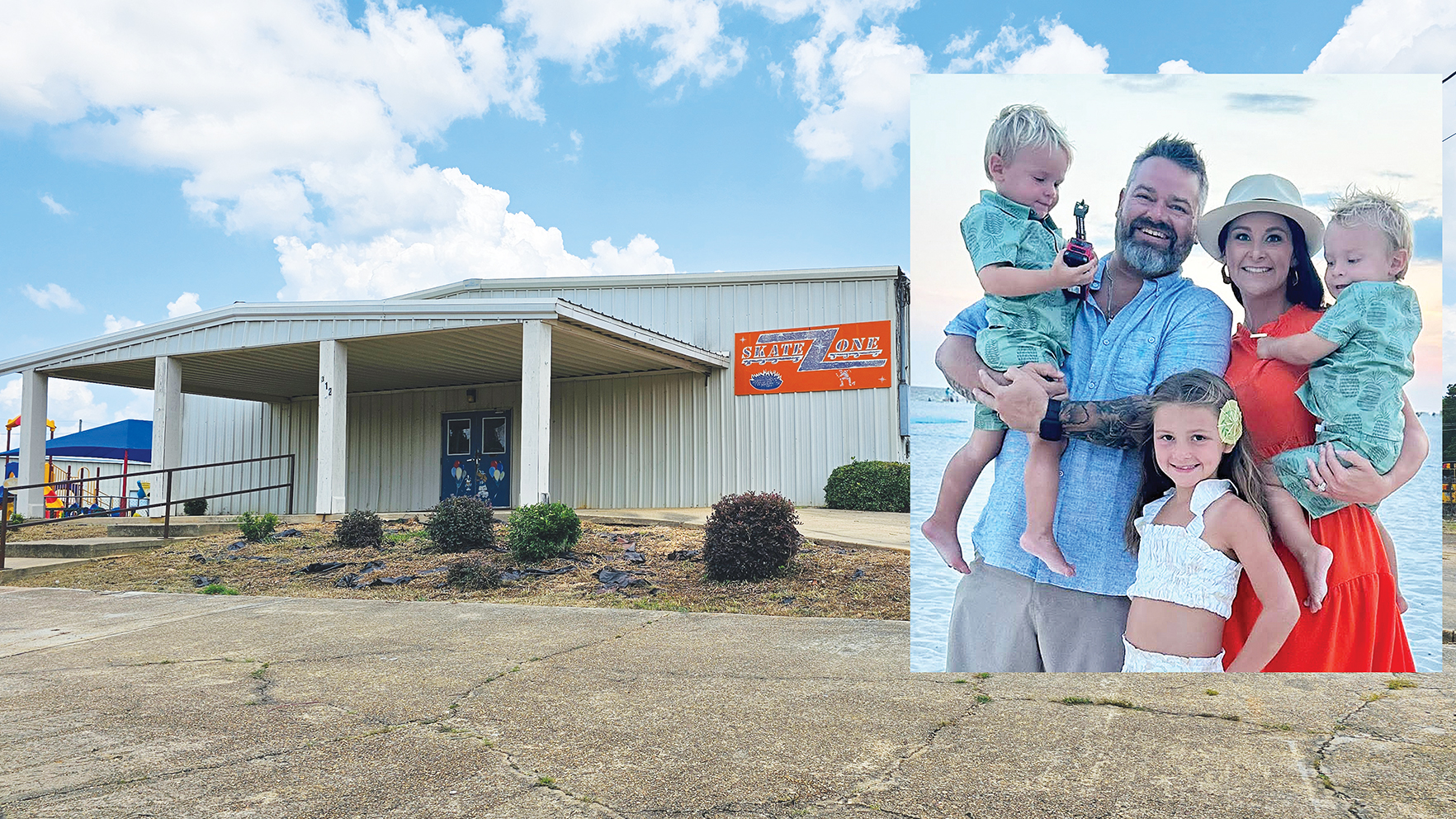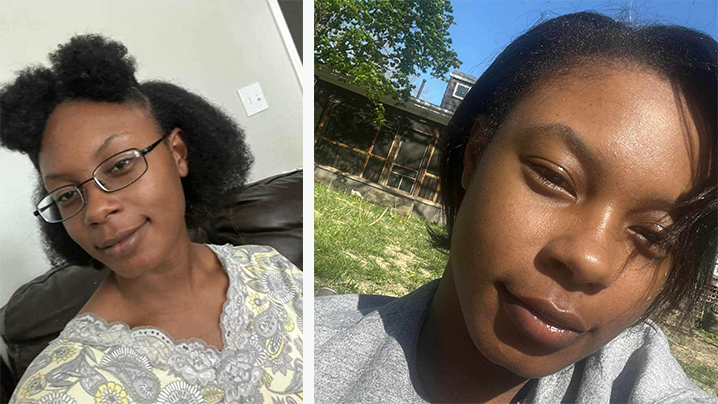Breakfast read: Research helps scientists track wildlife numbers in Jackson, other urban cities
Published 6:18 am Tuesday, June 25, 2024

- White-tailed deer were captured on wildlife cameras in Jackson, Mississippi’s Laurel Park as part of an unprecedented nationwide study to better understand how gentrification impacts urban wildlife populations. Mississippi State University Extension Service Urban Wildlife Specialist Adam Rohnke and a group of trained volunteers gathered data in the Jackson metro area for three years for the study that was led by Lincoln Park Zoo’s Urban Wildlife Institute. The study was also recently published in the journal “Proceedings of the National Academy of Sciences.” (Photo by MSU Extension Service/Adam Rohnke)
By Susan Collins-Smith
MSU Extension Service
RAYMOND — An urban wildlife specialist and a group of trained volunteers with the Mississippi State University Extension Service have been tracking wildlife in the Jackson metro area for three years to better understand how gentrification impacts urban wildlife populations.
Trending
Their work is part of an unprecedented nationwide study led by Lincoln Park Zoo’s Urban Wildlife Institute and recently published in the journal “Proceedings of the National Academy of Sciences,” or PNAS.
The study is aimed at gathering data on how gentrification influences the number and types of medium- to large-sized mammals found in 23 cities across the United States. Gentrified areas of cities have undergone neighborhood change as more educated, higher-income residents move into an underserved urban area, which often displaces the existing residents.
Adam Rohnke, Extension urban wildlife specialist and co-author of the study, said the group understood from its previous studies that as green infrastructure increases in cities, often there is an uptick in beneficial wildlife, including birds, insects and mammals. But the group wanted to know if and how the number and types of species differed between gentrified and nongentrified areas in the same cities and across all the cities in the study.
“As these gentrified areas see an increased tax base, more money tends to go into greenspaces, like public parks and other natural areas, often resulting in more tree canopy and other wildlife-friendly plants,” said Rohnke, who is also an assistant professor in the MSU Department of Wildlife, Fisheries and Aquaculture.
“Similarly, the new residents moving in often have more disposable income for landscaping management. As a result, these spaces have an influx of wildlife-friendly trees, shrubs, other plantings and irrigation. So, it would lead one to think you would likely have more biodiversity in these areas as habitat quality improves,” he said.
While both areas of a city may have an abundance of wildlife, nongentrified areas often have a different composition of species that are often considered as nuisance wildlife, like racoons, starlings and rats, which raises legitimate concerns about human quality of life in these communities. These concerns can range from human-wildlife conflict to the potential increase in zoonotic disease exposure for people living in these communities.
Trending
The study data also shed light on the inaccessibility of nature for marginalized communities.
“We asked, ‘In a city, who does and does not have easy access to nature?’ We found that gentrification, which changes the demographic composition of people in neighborhoods, has consequences that extend to other species we share cities with,” said Mason Fidino, a quantitative ecologist at Chicago’s Lincoln Park Zoo and lead author of the study, in a news release.
“This leaves marginalized communities without meaningful access to nature, which is a problem. My hope is that these results can be used to advocate for updated land development and management practices that prioritize social equity and access to nature spaces for all urban communities,” Fidino said.
Authors of the study used data collected between 2019 and 2021 from motion-detecting wildlife cameras at 999 sites across the 23 cities from Los Angeles to Boston. The analysis was based on 21 mammal species that were detected, including bobcats, coyotes, rabbits, squirrels, foxes, armadillos and white-tailed deer.
Study Results
Results of the study varied across the U.S. On the East Coast, the total number of different species was greater in gentrified areas of cities. On the West Coast, gentrified areas of cities recorded more differences in the composition of the species present between gentrified and nongentrified areas of cities.
Why is species composition in West Coast cities more different between gentrified and nongentrified areas, unlike the eastern cities? Study authors are not sure.
“It may have something to do with the geography and climate,” said Rohnke. “Many of these western cities are spread out and arid. Gentrified areas in the West typically have more irrigation and as a result support more vegetation and access to water — two key habitat components in extreme climates. Availability of water for wildlife is typically not as scarce in the East.”
Rohnke also noted that other broad regional differences in landcover moving from east to west could impact species composition between gentrified and nongentrified areas. However, this aspect was not accounted for in this study and warrants further research.
The central U.S. cities, like Jackson, recorded moderate differences in both number of species and the overall composition of species present between gentrified and nongentrified areas.
Factors, including the difference in the age of the cities and overall city design, could contribute to this finding. For example, Boston and New York City are nearly 200 years older than many central U.S. cities, but many central U.S. cities are older than western cities, Rohnke said.
“Other research has shown the wildlife communities have become more similar over time in these older cities. Boston and New York City also have high human development and population density on a per-acre basis, while central U.S. cities are less dense and more sprawling but not as significantly as some of the western cities in this study,” he said.
While gentrification can have a significant impact on urban biodiversity, researchers also found that impervious surfaces, including concrete, asphalt and compacted soil, had more of an influence on urban wildlife populations than gentrification. Moreover, when they looked at the effects of both gentrification and high impervious surface combined, they found there was less biodiversity overall.
“In some highly gentrified areas, you may have a lot of concrete, roads, taller buildings and parking lots along with smaller parcels of land and not a lot of vegetative space,” Rohnke said. “So, even with the influx of wealth into these gentrified areas, a high percentage of impervious surface means there is limited space for green infrastructure to make a measurable impact for certain types of wildlife, especially mammals.”
Jackson Data
This effect was seen at five of Jackson’s sites. However, as soon as impervious surfaces in gentrified areas fell below 50%, the number of species increased by nearly three on average compared to nongentrified areas.
“As those physical barriers, like roads, decrease and parcel size increases, there is more potential greenspace,” Rohnke said. “Additionally, Jackson is unique in that we still have a lot of green connectivity across the metro with the Pearl River that runs through downtown Jackson, extensive city parks systems, the Natchez Trace and other natural areas. This not only provides habitat but also pathways for animals to move in and around the Jackson metro.
“Our cameras have captured white-tailed deer and foxes in Laurel Park, which is in Belhaven — right in the middle of Jackson with residential and commercial properties and Interstate 55 in proximity. It’s a very urban park, but it’s right off the Pearl River with a lot of tree cover,” Rohnke said.
Rohnke and colleague Ann Smithson have led and trained Extension Master Naturalists and student workers in the Extension Undergraduate Apprenticeship Program to help collect and process the data.
“We are one of the only cities in the study that is nearly 100% volunteer-run when it comes to data collection and processing,” he said. “None of this would have been possible without the Master Naturalists or the undergraduate student apprentices we’ve had since 2019. Right now, we’re developing a guide on how we organized and executed our volunteer plan for other Urban Wildlife Information Network partners to use in the future.”
Rohnke, Smithson, students and volunteers managed 42 cameras in parks, cemeteries, golf courses, schoolyards and other greenspaces throughout the Jackson metro area. Volunteers have contributed more than 3,000 hours to data collection and processing on this and other related studies over five years.
This study is part of a larger body of research, including the Jackson Urban Wildlife Project, conducted through the Urban Wildlife Information Network, or UWIN. The network was formed by Lincoln Park Zoo’s Urban Wildlife Institute in 2010 and is comprised of scientists, ecologists and educators. Their continued data collection will help scientists better understand biodiversity and human-wildlife interactions in cities.
The Big Picture
“In the long run, the data we gather can help answer ecological questions about how wildlife is adapting to living in urban areas and how that is affecting people in those areas,” said Rohnke, who has been a UWIN member since 2019. “As we continue to collect this data, we will be able to monitor over time the differences in wildlife populations in our urban and rural areas,” he said. “This is important as urbanization grows across the country and the world.
“When I get calls from cities in the metro area and they want to develop in a certain area, our goal in the near future is to be able to give them science-based data and information from our communities on the status of the urban wildlife population and what kind of human-wildlife interaction, positive or negative, they can expect and plan to manage and/or mitigate,” he said.
The Jackson Urban Wildlife Project is a partnership between MSU Extension, UWIN and many local partners. For more information and to view an interactive map of the Jackson project, visit https://tinyurl.com/5f8ajpyr.





